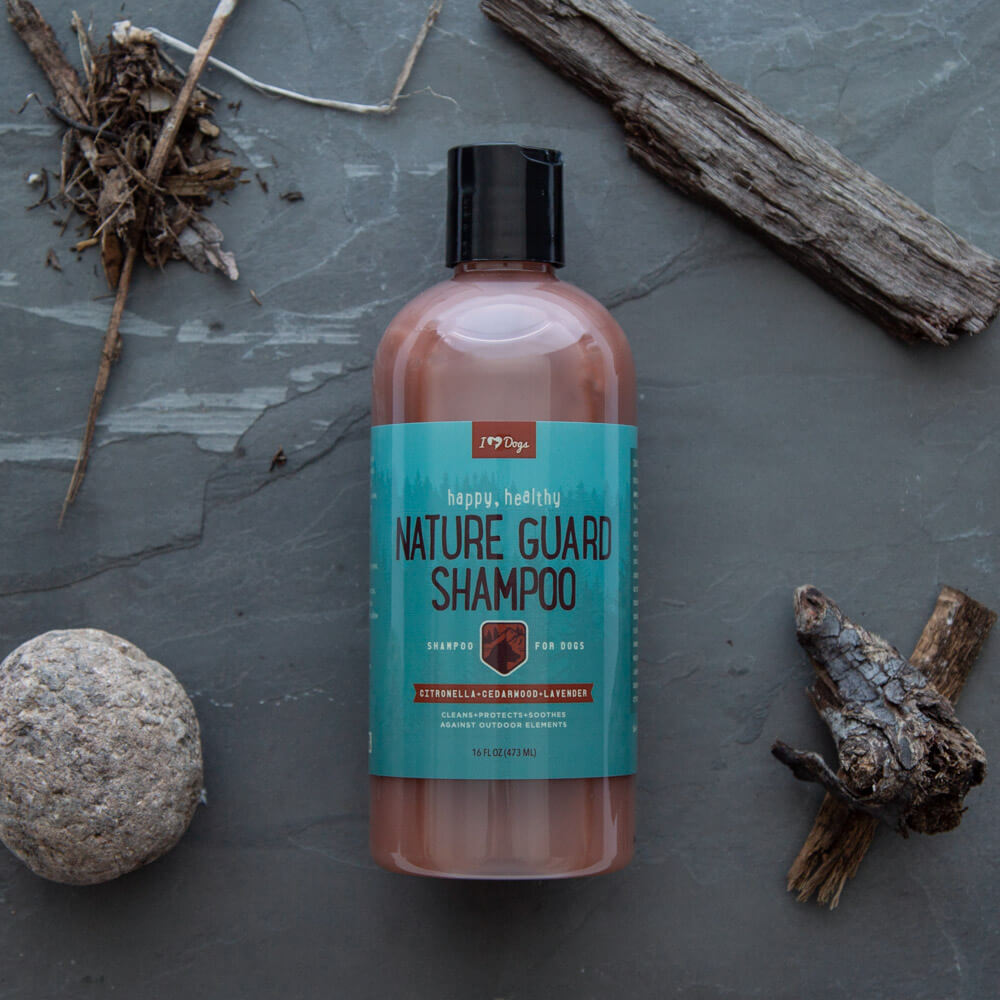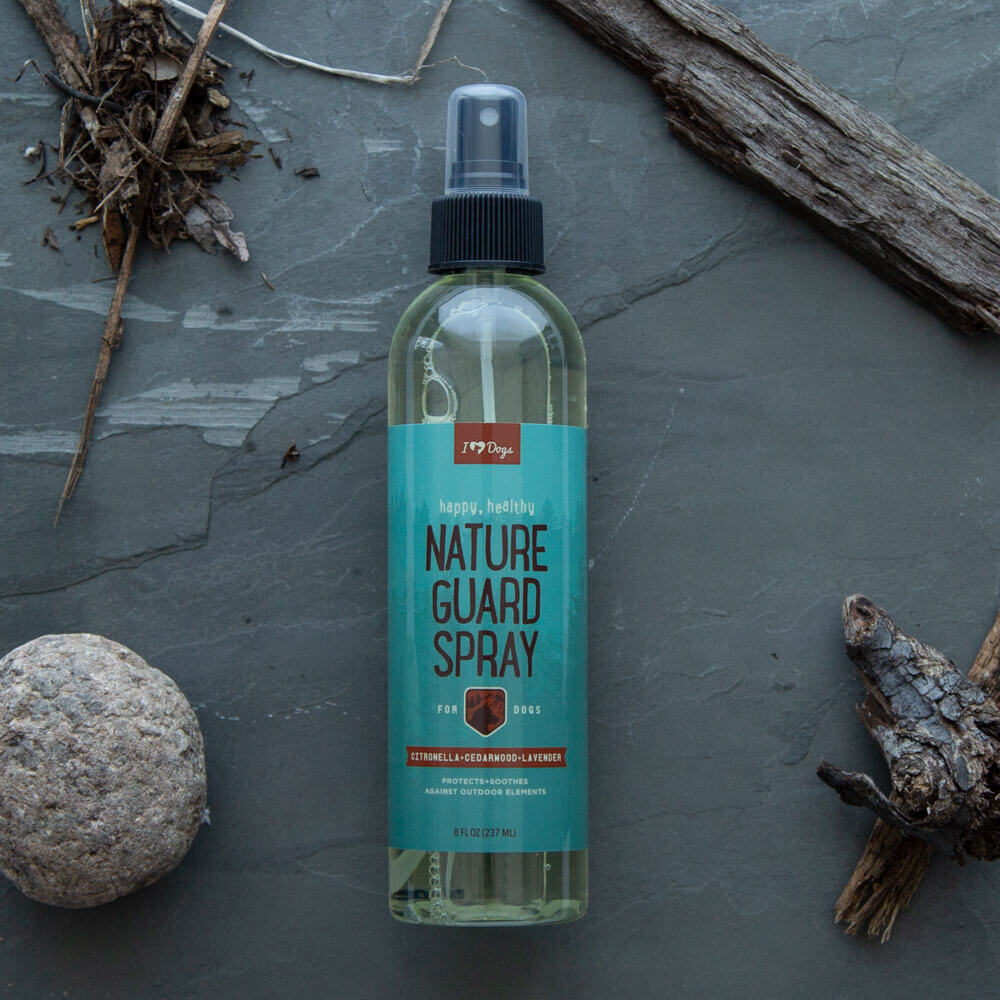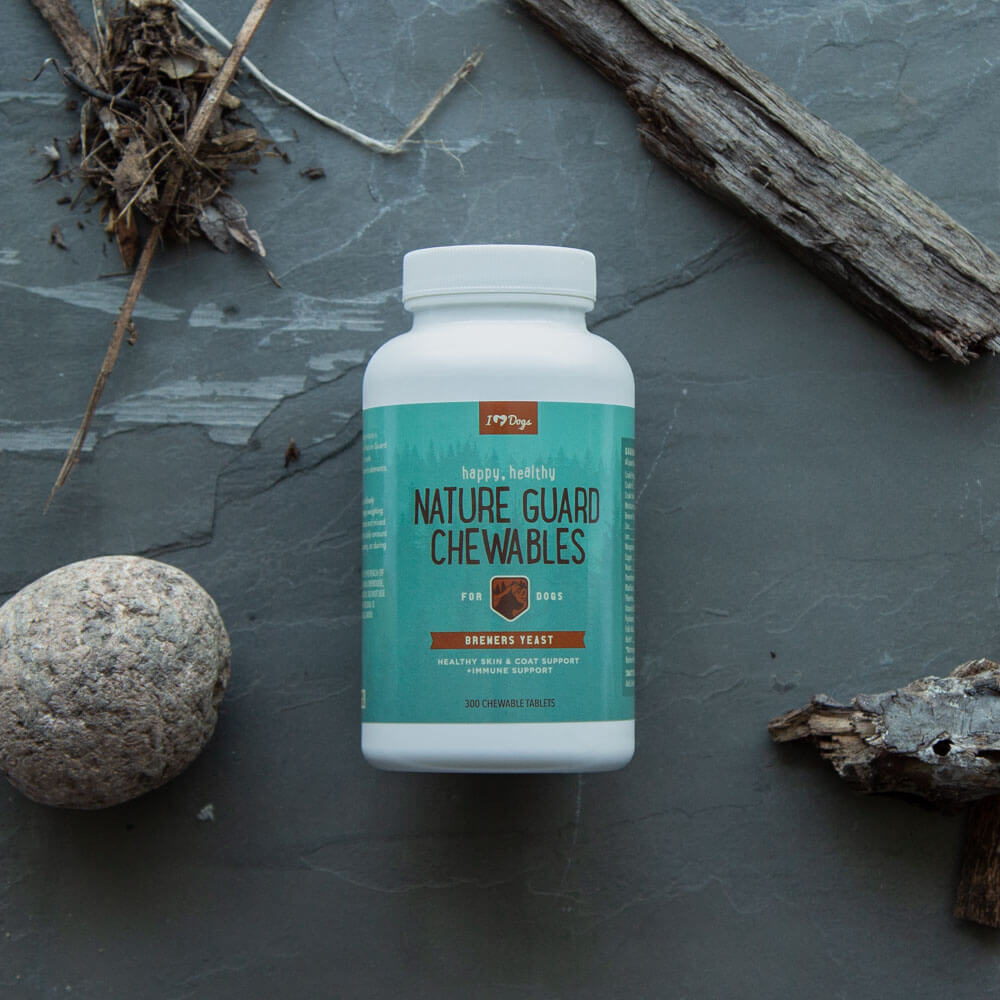Choosing the right flea and tick prevention for your furry friend is paramount, but navigating through myriad products can be overwhelming. To ease your worries, we’ve created a comprehensive guide exploring safe, natural alternatives that keep your pet protected without harsh chemicals. Delve into the importance of safeguarding your home, yard, and dog from these pesky parasites, and discover which natural repellents truly work and are safe for your beloved companion.

Table Of Contents
- Are Fleas And Ticks Seasonal?
- What Dangers Do Fleas And Ticks Pose For Your Dog?
- Flea-Related Issues
- Tick-Borne Illnesses
- Can Fleas And Ticks Harm Your Family?
- Fleas And Ticks In Your Outdoor Environment
- Chemical Yard Sprays
- Natural Flea And Tick Solutions For The Yard
- Natural Flea And Tick Prevention For Your Home
- Why It’s Important
- Methods
- Natural Flea And Tick Prevention For Your Dog
- Why It’s Important
- Bathing
- Natural Flea And Tick Repellent Spray
- Brewer’s Yeast
- Conclusion
- Additional Resources
Are Fleas And Ticks Seasonal?

The battle against topical parasites is toughest in spring and summer. Both pests prefer high humidity and temperatures between 70 and 85 degrees. However, with ever-changing global temperatures, there is no such thing as “flea and tick season.”
Even in the dead of winter, flea pupae can remain dormant in their cocoons for up to a year. A few warm days, and boom! You’ve got yourself a brand new batch of fleas. Even if the weather stays chilly, your home may be cozy enough to keep fleas alive and active all year round.
Some ticks remain active as long as the temperature is above freezing, while others lie dormant through the winter months by hiding out in leaf litter or thick brush. Then there are those lucky enough to latch onto a host before the first freeze. These ticks feed throughout the winter, clinging to the host’s hair between meals.
What Dangers Do Fleas And Ticks Pose For Your Dog?

Flea-Related Issues:
Flea Allergy Dermatitis
Many dogs are allergic to flea saliva and suffer severe itching, irritation, hair loss, and skin infections if bitten.
Anemia
If a flea infestation is bad enough, very small puppies and sickly dogs can actually lose enough blood to become anemic. Flea anemia can be life-threatening without prompt treatment.
Tapeworm Infection
Dogs with fleas chew at their itchy skin and may swallow flea-carrying tapeworm eggs. The eggs hatch inside the dog’s intestines and become long, segmented worms. While tapeworm infections are rarely serious in healthy dogs, young puppies may suffer from poor growth, dehydration, or anemia.
Related: Check Out Our Review of the Best Flea & Tick Treatments

Tick-Borne Illnesses:
Lyme Disease
Lyme disease is transmitted by the deer tick and can be quite serious in some dogs. Symptoms include stiffness, lameness, swollen joints, loss of appetite, fever and fatigue. In rare cases, Lyme can cause kidney failure and death.
Rocky Mountain Spotted Fever
The American dog tick, the wood tick, and the lone star tick carry Rocky Mountain Spotted Fever. For most dogs, the infection lasts about two weeks and causes fever, stiffness, neurological problems and skin lesions. In serious cases, the illness can be fatal.
Ehrlichiosis
The brown dog tick transmits this common and very dangerous disease. Symptoms include fever, loss of appetite, depression, weight loss, runny eyes and nose, nose bleeds, and swollen limbs.
Anaplasmosis
Also known as dog tick fever, Anaplasmosis is another disease transmitted by the deer tick. Symptoms may include fever, loss of appetite, stiff joints, lethargy, vomiting, diarrhea, and even seizures in extreme cases.
Canine Babesiosis
This disease is typically transmitted by the American dog tick and the brown dog tick. It causes anemia, pale gums, weakness, and vomiting.
Canine Bartonellosis
The brown dog tick transmits Bartonellosis. It can be difficult to diagnose because the symptoms of lameness and fever occur intermittently. Without treatment, this disease may cause heart or liver disease.
Canine Hepatozoonosis
This disease is thought to occur when a dog eats a disease-carrying tick. The symptoms are fever, runny eyes and nose, muscle pain, and diarrhea with blood.
Tick Paralysis
Although rare, tick-bite paralysis is very frightening. It is caused by a toxin in the saliva of certain female ticks. Once bitten, the toxin enters the bloodstream, affecting the nervous system and causing partial paralysis. Symptoms usually resolve within 72 hours of the tick’s removal.
Can Fleas And Ticks Harm Your Family?

Fleas prefer a non-human host, but can and will bite humans. Some people are allergic to flea saliva and may suffer itchy, painful reactions. Fleas can also transmit certain serious diseases.
Ticks are another story. They love to attach and feed on humans. In fact, many of the same diseases, including Lyme and Rocky Mountain Spotted Fever, also affect humans. However, it is important to note that dogs do not transmit these diseases to humans. The infection must come directly from a tick bite.
Fleas And Ticks In Your Outdoor Environment

Fleas and ticks love the dark nooks and crannies around your yard. They thrive in dense trees, shrubs, and tall grass. In addition to leafy areas, fleas may be found under porches, along the foundation of your home, and in your pup’s dog house.
To prevent fleas and ticks from taking up residence, perform regular yard maintenance. Rake leaves, remove woodpiles, and store seasonal furniture when not in use. This will help prevent your dog from becoming reinfected each time he heads outside.
Even if you are able to stave off an infestation in your home, it only takes one bite to set off an itchy reaction. Scarier still, ticks can transmit life-threatening diseases to your dog after being attached for less than 48 hours.
Since these parasites prefer such specific outdoor areas, you do not have to treat the entire yard to banish them. The question is: should you use a chemical pesticide or opt for a natural flea and tick treatment?
Chemical Yard Sprays

Insecticides, known as pyrethrins, are often found in yard sprays and foggers. They are highly effective at killing fleas and ticks and are generally safe for use around dogs. However, pyrethrins are quite toxic to other animals, especially cats. Even if you do not have a kitty, consider your neighbors’ pets before using a pyrethrin-based flea and tick spray.
In addition to the risk these chemicals pose to cats, some dogs are abnormally sensitive to pyrethrins. These pups face respiratory distress and neurological symptoms that may prove fatal.
Other outdoor flea products contain organophosphates, a class of chemicals that act as a nerve poison. While not dangerous in small amounts, overexposure can cause skin irritation, nervous system damage, and death.
Natural Flea And Tick Solutions For The Yard

Pet parents searching for a safer alternative to pesticides often turn to a multi-purpose substance called diatomaceous earth. The naturally-occurring powder is made from silica, and is safe to use both outside and inside the home. Diatomaceous earth is made up of fossilized simple cell organisms left over from ancient water sources. When sprinkled over your yard (or carpets) it dries out flea eggs before they hatch, breaking the life cycle.
A slightly grosser, but equally natural flea and tick prevention method is nematodes. These microscopic worms will not harm you or your pets, but they will do a number on ticks and flea larvae.
Some people believe that strong-scented evergreens such as cedar chips and wax myrtle leaves help to repel fleas. While adding these to your yard certainly can’t hurt, there is not enough scientific evidence to prove they actually work.
Natural Flea And Tick Prevention For Your Home

Why It’s Important
As harmful as pesticides and dangerous chemicals can be in the open environment of your yard, just imagine the damage they can do to the living beings in your home. Indoor flea sprays can irritate your eyes, skin, and lungs. Bombs and foggers are equally irritating and may not be fully effective since they cannot penetrate carpets or fabrics.
So how can you safely prevent and eradicate fleas inside your home?
Methods:
Keeping your living space neat and tidy will help control flea populations. Wash pet beds, blankets, and furniture covers on high heat, vacuum and disinfect floors, and minimize clutter. Be sure to empty the vacuum canister and dispose of the contents after each use to prevent fleas from escaping back into your home.
As mentioned above, diatomaceous earth is safe to use both outside and inside your home. Sprinkle it over clean carpets and into the crevices of your furniture.
Herbal sprays containing peppermint, cinnamon, or rosemary oil may also help deter fleas and ticks naturally. They are typically safe for people and pets. However, there is no scientific proof they work.
Related: 10 Best Vacuums for Pet Hair
Natural Flea And Tick Prevention For Your Dog

Why It’s Important
In September 2018 the FDA alerted pet owners to the potential dangers of certain chemical flea and tick products. It seems some of the insecticides in oral and topical flea and tick preventatives have the potential to cause neurological problems. Products such as Bravecto, Nexgard, Simparica, and Revolution Plus must now carry warnings of the risk of seizures, muscle tremors, and ataxia.
Many flea and tick products available from pet stores also contain toxic chemicals like organophosphates. Some contain levels high enough to harm people who handle their pets.
You and your dog deserve safe, natural flea and tick prevention!
Bathe Your Dog Regularly

While bathing will not prevent fleas from getting back on your dog, it can help strip away live pests and their eggs. Fleas cannot grasp the hair and will fall off and drown during bathing. Using a stripping dish soap also helps loosen and wash away parasite eggs. A shampoo like our all-natural Happy, Healthy™️ Nature Guard Citronella Flea & Tick Shampoo helps ward off the parasites after bathing as well. Invest in a flea comb to help nab fleas in between baths.
Natural Flea And Tick Repellent Spray
Happy, Healthy™️ Nature Guard Citronella Flea & Tick Spray is an all-natural water-based spray containing citronella and other botanicals rather than harsh chemicals. It naturally repels fleas and ticks while leaving your dog’s coat soft and smelling fresh. Since there are no pesticides to damage the skin, it is gentle enough for everyday use.
Apply it directly to your pup’s coat or use it on bedding, rugs, collars, and harnesses.
Brewer’s Yeast
Happy, Healthy™️ Brewer’s Yeast & Garlic Natural Flea & Tick Repellent Chewable Supplement naturally repel fleas and ticks from the inside out. These tasty treats contain just enough yeast and garlic to make your dog repellent to parasites – but not enough for you to smell!
As a bonus, each tablet is an excellent source of protein, trace minerals, and B-complex vitamins to help promote healthy skin & coat, maintain normal cellular growth and function, boost immune support, and enhance overall health.
Conclusion
Additional Resources:
Learn more about fleas and ticks, and how to manage them naturally:
5 Signs Your Home Has A Flea Infestation
5 Tips For Managing A Flea Infestation
11 Natural Ingredients To Help Keep Fleas Away
Ask A Vet: How Do I Pick The Best Flea Product For My Dog?
7 Natural Tick Repellents For Dogs
These statements have not been evaluated by the Food and Drug Administration. This product is not intended to diagnose, treat, cure, or prevent any disease. The information on this website is not intended to replace a one-on-one relationship with a qualified healthcare professional.



 Toledo, United States.
Toledo, United States.